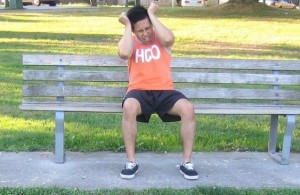Barometric pressure is also known as the air pressure or atmospheric pressure which can change on the weather condition or altitude. Barometric pressure headaches occur due to changes in the atmospheric pressure and classified into non-migraine and migraine type of headaches. The pain tends to vary from person to person and usually depends on the environmental changes and overall condition of the person. Factors such as degree of stress, tension as well as nicotine and caffeine use can trigger a headache.
Symptoms of barometric pressure headache ranges from minor discomfort to severe pain which happen once in a while that can last for an hour or up to several days.
Symptoms caused by barometric pressure headaches
- Usually, barometric pressure headaches are two-sided which affects either sides of the head but sometimes the pain can be one-sided.
- A barometric pressure headache is similar to a tight band of pressure that is gradually moving across the head.
- Pain can be felt around the forehead or the nasal bridge area and there is throbbing pain that can be felt in the nape and occipital area.
- Barometric pressure headache can be felt in the form of cluster headaches where the affected person experiences nasal congestion, sweating, runny nose, eye redness and swollen eyelids. Take note that the pain can be moderate and can become severe.

Treatment and home remedies of barometric pressure headaches
- Take plenty of rest by resting the body and mind. The individual can rest in a dark and quiet room for an hour. This stress-free environment helps in relaxing the mind and body, thus the symptoms of the headache is minimized.
- Apply alternately cold and hot compress. Wrap ice cubes in a towel and apply it over the affected area for 10 minutes then follow it with an application of a warm heat pack. Heat helps in releasing the tension from the tight muscles found in the neck and the facial area while an ice pack provides a numbing effect on the pain.
- Massage gently the forehead in order to help relieve the discomfort caused by the headache. Make gentle pressure and circular movements around the temples to help open and relax the sinuses.
- Avoid being dehydrated. Remember that dehydration can worsen the headache. The individual should sip on water throughout the day but avoid water during bedtime.
- Take over-the-counter pain medications such as ibuprofen and naproxen and preferably the gel-based capsules to help in relieve pain and discomfort.
- The individual should take magnesium supplements 200-400 mg/day.
Other remedies
- Inhaling steam helps the vessels and the surrounding muscle tissue to loosen up.
- Encourage the individual to perform some moderate exercises. This can help prevent the occurrence of headaches. It is recommended to perform brisk walking since it helps release endorphins into the body. Endorphins are chemical elements that functions as pain killers and provides relief from pain.
